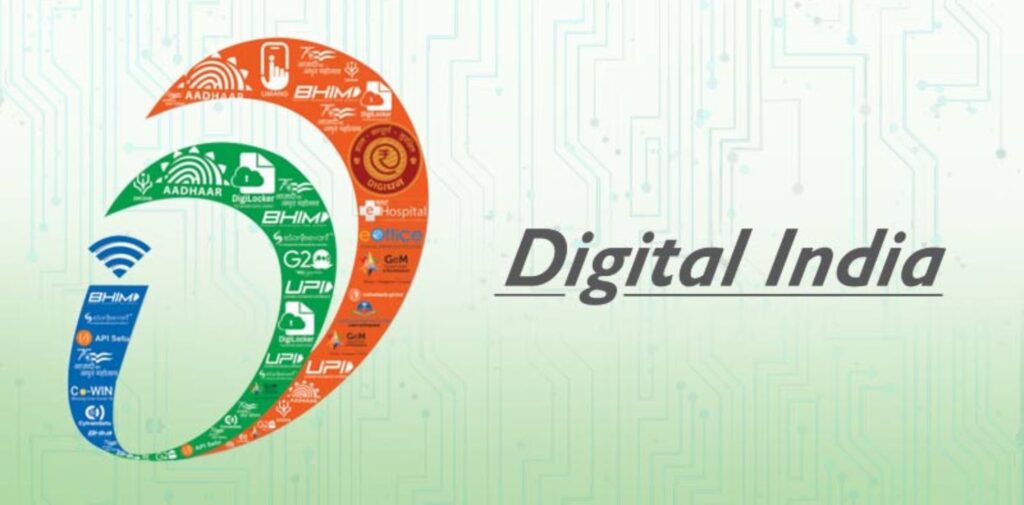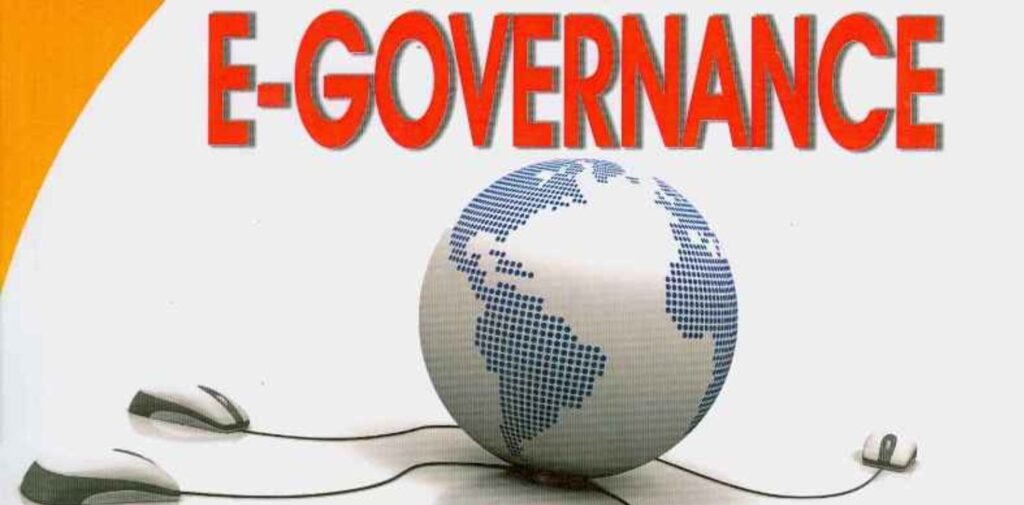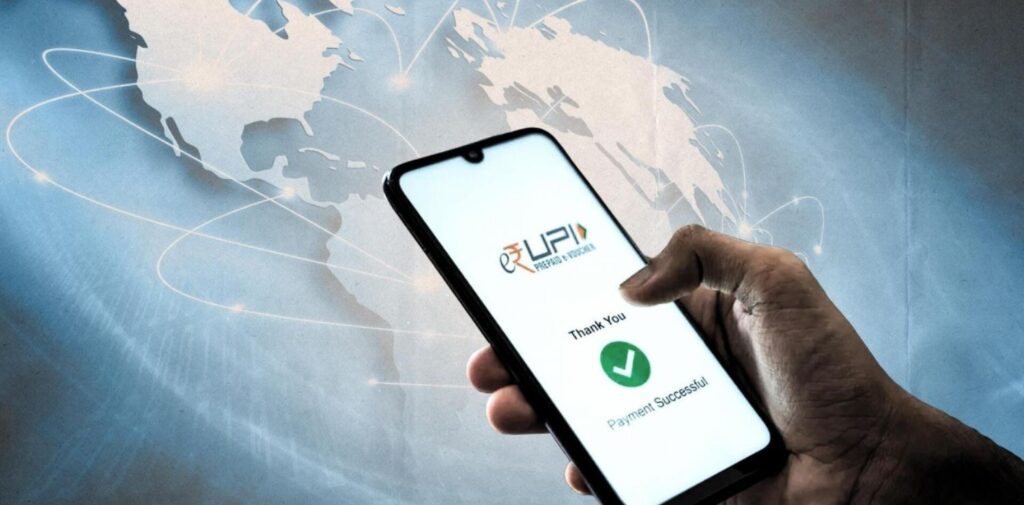In recent years, India has witnessed a dramatic transformation in how technology is reshaping governance and society. The digital revolution, powered by internet connectivity, mobile phones, and technological innovations, is changing how people live, work, and interact with the government. From e-governance initiatives to game-changing technologies like Aadhaar and UPI, India’s journey toward becoming a “Digital India” is one of the most significant transformations in the country’s history.
What is Digital India?
The Digital India initiative was launched in 2015 by the Government of India with the vision of transforming India into a digitally empowered society and knowledge economy. The goal was to improve online infrastructure, increase internet connectivity, and make government services accessible to citizens electronically. Through this initiative, India aims to provide a wide range of public services, promote digital literacy, and use technology to improve the quality of life for its people.
Digital India is not just about making technology available; it is about making it accessible to everyone, from rural areas to urban centers, and ensuring that no one is left behind.

Key Elements of Digital India
The Digital India initiative focuses on three key areas:
- Digital Infrastructure – Ensuring that digital infrastructure is available everywhere, particularly in rural and remote areas.
- Digital Literacy – Empowering citizens with the skills to use technology, thus bridging the digital divide.
- Digital Services – Making government services and information available online, thus ensuring transparency, efficiency, and ease of access.
These elements come together to create a society where people can access services, information, and opportunities using technology.
E-Governance: Transforming Public Service Delivery
One of the most significant aspects of Digital India has been the push for e-governance. E-governance refers to the use of digital technologies to deliver government services to citizens. This has been a game-changer in the way the government interacts with its people.
In the past, government services were often slow, cumbersome, and required citizens to stand in long queues or travel long distances. However, with e-governance, many of these services are now available at the click of a button, through online portals and mobile applications.

For example, the Digital India Portal allows citizens to access various government services online, including applying for passports, filing taxes, or registering for government schemes. This has made the entire process more efficient and user-friendly, reducing the need for physical paperwork and long waiting times.
Similarly, programs like e-District, e-Tendering, and e-Health have brought more transparency and efficiency into various sectors of governance.
Aadhaar: The World’s Largest Biometric Database
One of the most groundbreaking initiatives of the Digital India campaign is Aadhaar. Aadhaar is a unique identification system that uses biometric data (fingerprints, iris scans) and demographic information (name, address, etc.) to give each Indian citizen a 12-digit unique identity number. The system is linked to a central database that stores personal details securely.

Aadhaar serves as a tool for identity verification and is used to access a wide variety of services, such as opening a bank account, receiving government subsidies, and even applying for loans. By eliminating the need for traditional documentation, Aadhaar has streamlined many processes, making them more efficient and accessible.
For example, through the Direct Benefit Transfer (DBT) system, subsidies for food, fuel, and other services are directly transferred to a person’s bank account based on their Aadhaar number, reducing corruption and ensuring that benefits reach the intended recipients.
UPI: Revolutionizing Payments and Financial Inclusion
Another technology that has had a transformative impact on India is Unified Payments Interface (UPI). Launched in 2016 by the National Payments Corporation of India (NPCI), UPI is a real-time payment system that allows users to transfer money between bank accounts instantly using their smartphones.
Before UPI, digital payments were complicated and often involved multiple steps. UPI simplified the process, allowing anyone with a mobile phone to send or receive money using just a mobile number or a unique identifier called the UPI ID.

This has not only made transactions faster and more efficient but has also played a crucial role in financial inclusion. Millions of people who did not have access to traditional banking now have the ability to conduct financial transactions, pay bills, and transfer money using their mobile phones.
UPI has become a widely accepted method of payment, and it is used by millions of people daily for everything from paying for groceries to settling bills and making online purchases. The growth of UPI has also led to the rise of digital wallets and payment apps like Paytm, Google Pay, and PhonePe, making digital transactions a common part of everyday life in India.
The Impact on Governance and Society
The digital transformation in India is not just about making government services available online or simplifying financial transactions. It has far-reaching consequences for governance, society, and the economy.
- Increased Transparency and Accountability: Digital platforms provide a level of transparency that was previously hard to achieve in government services. With e-governance, citizens can track the progress of their applications, check the status of government schemes, and even lodge complaints online. This reduces the opportunities for corruption and ensures that public servants are held accountable for their actions.
- Improved Access to Services: Technology has made it easier for citizens, especially those in remote or rural areas, to access government services. Through initiatives like Common Service Centers (CSCs), people in far-flung regions can access digital services such as e-filing of taxes, applying for government schemes, or even getting health check-ups.
- Empowerment of Citizens: The Digital India program empowers people by giving them the tools and knowledge to access services and information at their fingertips. Digital literacy programs are teaching people, particularly in rural areas, how to use smartphones and computers to their advantage. This has opened up new economic opportunities, from online education to digital entrepreneurship.
- Boost to the Economy: The rise of digital payments, e-commerce, and online services has also boosted India’s economy. Digital platforms have made it easier for businesses to reach customers, reduce transaction costs, and expand their markets. The startup ecosystem has flourished with the support of digital technologies, and the country is now home to some of the largest tech companies and startups in the world.
- Challenges to Overcome: Despite the remarkable progress, there are still challenges in fully realizing the vision of Digital India. Issues such as the digital divide, internet connectivity in remote areas, cybersecurity concerns, and data privacy issues need to be addressed. The government is working to solve these problems by expanding internet infrastructure, providing digital literacy training, and ensuring strict regulations on data protection.
Conclusion: Rise of Digital India
The rise of Digital India is a testament to how technology can transform governance and society for the better. From making government services accessible online to revolutionizing payments through Aadhaar and UPI, digital innovations have made life easier, more efficient, and more inclusive for millions of Indians.
However, as India continues to embrace the digital revolution, it must ensure that the benefits of technology reach everyone, regardless of their socio-economic status or geographical location. By continuing to expand digital infrastructure, promote digital literacy, and protect citizens’ privacy and data, India can build a truly digitally empowered society for the future.
The journey of Digital India is just beginning, and its success will serve as an example for the rest of the world on how technology can drive social and economic change.




